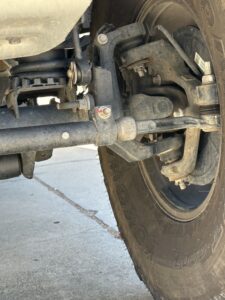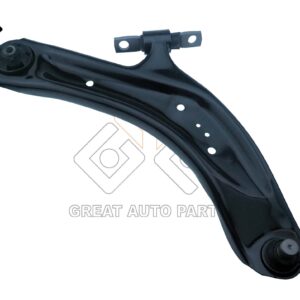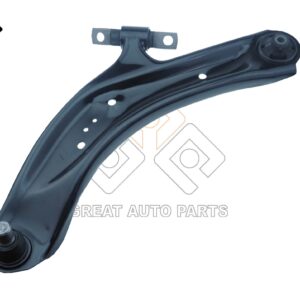54500-4CA0A, Nissan X-Trail (T32) Suspension Control Arm, RH
NISSAN X-TRAIL ( T32 ) 14~
RENAULT KOLEOS II ( HC_ ) 16~
54500-4CA0A, 54500-5HA0A, 54500-4BA0A, 54500-4CU0A, RK623111
Is your vehicle’s handling feeling less than smooth? It might be a sign of worn suspension links. Suspension Control arms are essential components that ensure a stable, comfortable ride. They are a critical part of your vehicle’s suspension, connecting the steering knuckle to the vehicle frame. This vital link allows the wheels to move up and down while staying perfectly aligned with the road.

Control arms are the silent heroes of your vehicle’s ride comfort and safety. They expertly support the vehicle’s weight and create the pivot points for the steering system. This unique design lets the wheels move independently, absorbing road shocks and delivering better handling. As a result, you get a smoother, more controlled driving experience.
Key Functions of Suspension Control Arms
Suspension links primarily come in two types: upper and lower. Although they work together, they have distinct functions and characteristics.
| Feature | Upper Control Arm | Lower Control Arm |
| Location | Above the wheel hub | Below the wheel hub |
| Primary Function | Assists with wheel alignment | Bears the vehicle’s weight |
| Size | Smaller and lighter | Larger and stronger |
| Typical Usage | Front suspension | Both front and rear suspension |
In a typical front suspension setup, each wheel has both an upper and a lower suspension links. The upper one attaches to the top of the wheel hub and the vehicle frame, while the lower one connects to the bottom of the wheel hub and the frame. This configuration provides a wide range of motion and helps to maintain wheel alignment.
A worn-out or damaged control arm can cause vibrations, poor handling, and other serious issues. Worn bushings or ball joints can lead to looseness in the suspension, resulting in vibrations, especially at high speeds or over bumps.
Symptoms of Suspension links Problems:
Regularly checking your suspension control arms can help you avoid costly repairs and prevent further damage. It’s time to replace them if you notice any of these signs of wear or damage:
Regular maintenance checks are key to identifying issues before they become serious problems. We recommend having your suspension system inspected during routine maintenance, especially if you notice any of the symptoms above. Replacing control arms at the first sign of trouble can prevent further damage and ensure a safe, smooth ride.
At Great Auto Parts, we specialize in providing high-quality suspension links and customized chassis steering parts. Our products meet the highest industry standards, ensuring top-tier durability and performance. We also offer a range of tailored services, including custom fabrication and component upgrades.
Why Choose Great Auto Parts?
Control arms are essential for your vehicle’s suspension, ensuring a smooth and stable ride. By understanding their functions and knowing when to replace them, you can maintain optimal vehicle performance. For top-quality suspension links and customized chassis steering parts, trust Great Auto Parts to provide the best products and services.
Showing all 2 results

NISSAN X-TRAIL ( T32 ) 14~
RENAULT KOLEOS II ( HC_ ) 16~
54500-4CA0A, 54500-5HA0A, 54500-4BA0A, 54500-4CU0A, RK623111

NISSAN X-TRAIL ( T32 ) 14~
RENAULT KOLEOS II ( HC_ ) 16~
54501-4CA0A, 54501-5HA0A, 54501-4BA0A, 54501-4CU0A, RK623110